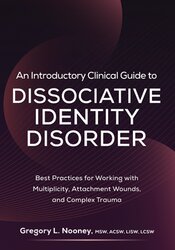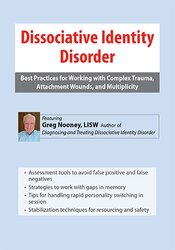10 Aspirations for Therapists Working with Clients with Dissociative Identity Disorder (DID)

Dissociative Identity Disorder (DID) presents some of the most complex challenges in psychotherapy. Rooted in profound developmental trauma, DID requires clinicians to hold a nuanced understanding of dissociation, attachment, and systems work. The therapeutic relationship often becomes the primary vehicle for safety, stabilization, and eventual integration of experience.
While clinical literature offers frameworks and models, many therapists struggle with the practical realities of working with DID. Progress is rarely linear, and treatment must balance clinical expertise with deep respect for the client’s lived experience. To support clinicians in this demanding work, DID specialist Greg Nooney outlines 10 core aspirations that can guide practice. These principles are not prescriptive techniques, but reflective guideposts anchored in clinical wisdom that help therapists approach treatment with integrity, humility, and attunement.
1. Respect Insider Knowledge
Your client possesses insider knowledge. You bring clinical training and outsider knowledge, but they live inside their system every single day. They are the experts on their inner world, and we do our best work as clinicians when we approach therapy with that deep respect.
2. The Client Is the Whole System
Your client is the entire system, not just the primary alter who often manages day-to-day life. It’s easy to begin favoring one part over another, especially when conflicts arise. But every alter, even those who seem disruptive, serves a vital role. Together, they form a complex and adaptive whole.
3. Center the Client, Not Yourself
In moments of crisis, clients may look to you for answers. While it can be tempting to rely on your expertise, the most effective solutions often come from within their system. Center your client’s insider knowledge and encourage them to draw on internal resources across alters.
4. Stay Curious
Every DID system is unique. If you’ve known one person with DID, you’ve known one person with DID. Let go of preconceived notions. Ask open questions. Let your client teach you who they are. Curiosity is the antidote to fear and rigidity.
5. Be Congruent and Honest
Clients with DID have a finely tuned awareness of inauthenticity. Show up with honesty and transparency, even when you’re unsure. Congruence builds trust and safety.
6. Enter, But Stay Grounded
It takes courage to step into a client’s inner realm, but remember to stay rooted in your own. You are a grounded presence walking alongside them, not merging with them. Your stability fosters attunement and helps the system anchor itself.
7. Trust the Process
Work with DID clients rarely follows a neat, linear path. Outcomes may not look like what you or others expect. Progress often happens in small, meaningful steps. Trust the process.
8. Know and Share Your Limits
Therapy with DID clients can be intense, given the depth of trauma involved. As therapists, we each have limits—of time, ethics, energy, and expertise. Naming these boundaries helps clients understand the therapeutic frame and prevents misunderstandings.
9. Seek Support When You Need It
When you feel stuck, overwhelmed, or notice strong countertransference, seek consultation or your own therapy. This is not weakness—it’s responsible, ethical practice.
10. Your Client Is Already a Survivor
Never forget: your client has already survived more than you can imagine. Whatever unfolds in the therapy room, it is likely far less overwhelming than what they’ve endured before. Trust their resilience.
These aspirations represent a framework for ethical and effective engagement with clients living with Dissociative Identity Disorder. They highlight the importance of maintaining therapeutic boundaries, respecting the internal system, and trusting in the client’s resilience while navigating complex clinical presentations. If you’re seeking to deepen your expertise, Greg Nooney’s An Introductory Clinical Guide to Dissociative Identity Disorder offers a comprehensive resource grounded in both research and extensive clinical experience.

Based on Greg Nooney’s 30-plus years of working with DID, this introductory how-to guide provides you with foundational, yet easy-to-follow, best practices for identifying and working with multiplicity.

When clients come to you seeking relief from their traumatic pasts it feels like familiar work. Difficult, but familiar.




